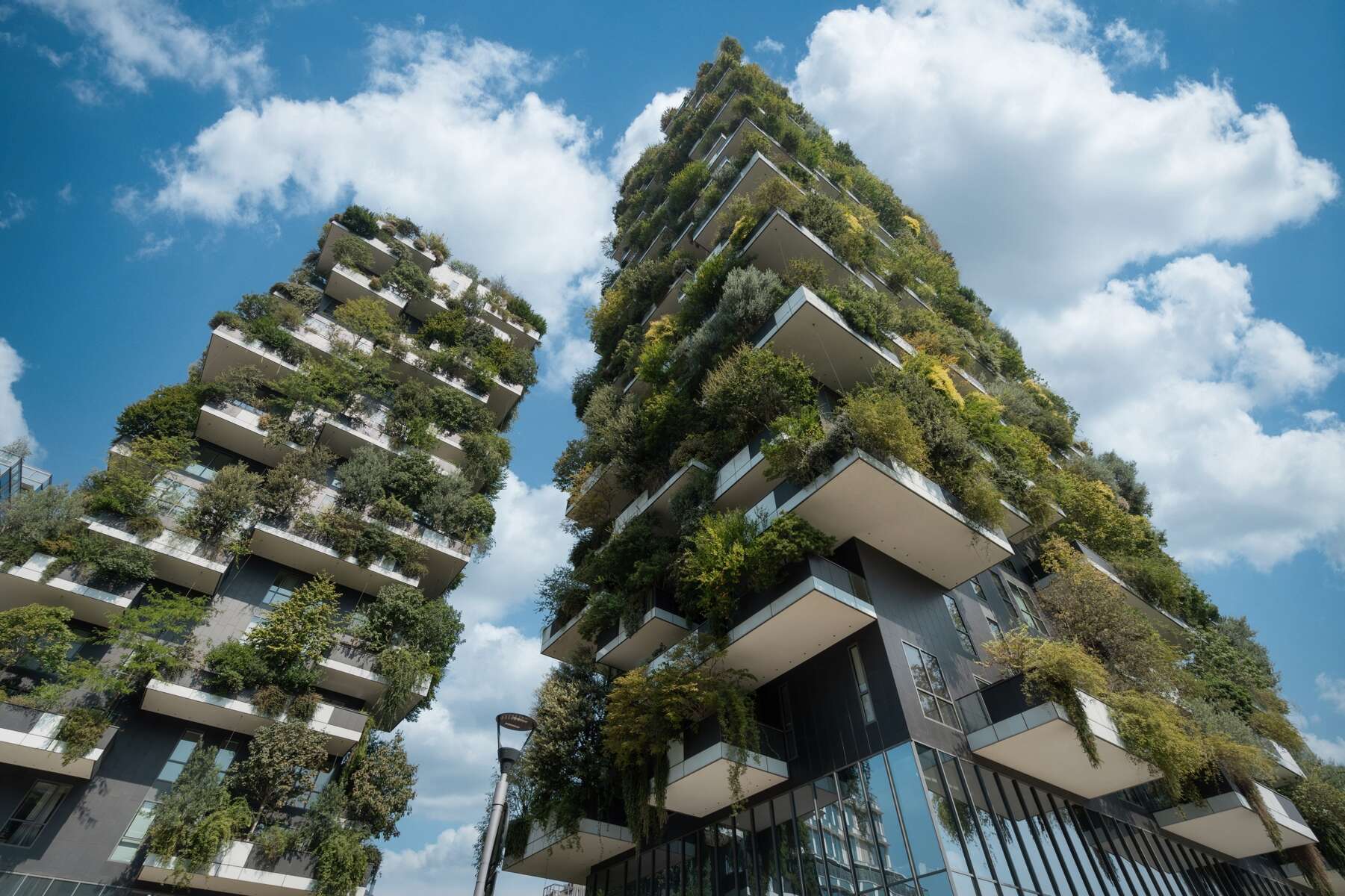
How can we make buildings more sustainable?
Pumps play a key role
The United Nations have defined 17 ambitious sustainability goals to be reached by humanity by 2030. Modernising buildings plays a major part in this process. As a matter of fact, about 30 percent of global energy consumption and a large proportion of water consumption are attributable to real estate. Pumps can make a difference in making buildings more sustainable.

They will keep the water supply and waste water disposal systems in buildings running: circulator pumps (1), balancing valves (2), pressure booster systems (3) and lifting units (4).
This is how pumps can contribute to lowering the energy consumption of large buildings and consequently their CO₂ emissions. According to the German BMWK (German Federal Ministry for Economic Affairs and Climate Action), more efficient pump sets can reduce the energy and power costs of pumps by up to 30 percent.
Especially for operators of large building complexes, such as schools, residential homes or shopping centres, this is not only a moral but also a financial decision, given that 30 to 50 percent of a pump’s life cycle costs are made up of power costs.
Efficiency is the focus of product development at KSB. And more efficiency translates into more sustainability. We have made it our aim for 2025 to have lowered the CO₂ emissions generated through the operation of our water pumps by 850,000 tonnes per year in Europe alone. Here are three examples of how KSB pumps can help save power and water in buildings:
2. Optimising heat distribution
Demand-driven distribution of heat energy makes the operation of modern heating systems reliable and, especially, energy-efficient. This is not to be taken for granted as water always follows the path of least resistance. Without suitable measures being taken, consumers near the pump will be oversupplied and consumers further away from the pump will be undersupplied, which leads to significant energy losses in heating and cooling systems. A remedy is hydraulic balancing with modern balancing valves. Not only are they indispensable for a reliable and, especially, cost- and energy-efficient operation, they are also a requirement stipulated in a number of directives and regulations, such as DIN 18380 / VOB 3.1.1 (German construction contract procedures), EnSimiMaV (German ordinance on securing energy supply via measures effective in the medium term) and GEG (German Buildings Energy Act). They enable energy savings of up to 15 percent and impress with an excellent cost/benefit ratio. With its BOA-Control family KSB offers a complete hydraulic balancing range comprising static balancing valves, differential pressure regulators, pressure-independent control valves including actuators, and control valves. In addition, the BOA-Control IMS type series offers the opportunity of permanent process monitoring of temperature and volume flow rate with modern ultrasound technology. A win-win situation for all involved: consultants, engineering contractors, operators and consumers.

3. Flexible pressure booster systems
When municipal water supply pressure is insufficient to supply the upper levels of a building with constant pressure, a pressure booster system is needed. KSB’s pressure booster systems are composed of two to six high-pressure pumps in series because several small pumps are more flexible than one large pump (and can respond to demand quicker and in a more energy-efficient way). In times of low water demand fewer pumps can be operated, which lowers energy consumption. Also, the power range of individual pumps running at low water demand is more efficient than that of a single large pump. The latter would have to be operated at a high power input even when little water is required. In summary, this design lowers the energy consumption and therefore the CO₂ emissions. Naturally, pressure booster systems such as the Delta product family from KSB are fitted with variable speed systems – ensuring the highest energy efficiency.

Award received for sustainability – Munich’s Macherei

The project called “die Macherei” in Munich’s Berg am Laim district is a future-oriented urban office and commercial quarter with flexible loft office spaces, a design hotel, retail shops, business enterprises and a diverse offer of gastronomic experiences. It was the first quarter to be awarded the LEED Gold certification. LEED stands for Leadership in Energy and Environmental Design and is a rating system for environmentally-friendly, resource-efficient and ecological building projects. It is used for sustainability certification worldwide. Four of the eight categories considered in the certification process were majorly influenced by the KSB products used for water supply and waste water disposal.


